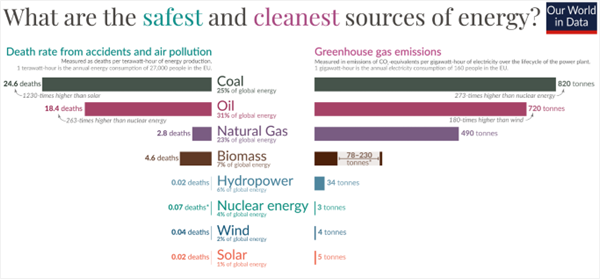Supporters of nuclear power argue that it’s a source of clean, renewable and reliable energy, while critics say that it’s costly to produce and dispose of, and dangerous to both society and the environment.
In the UK, nuclear power accounts for around 15% of our energy mix, with a further 34% coming from natural gas, 19.6% from wind, 8.5% from solar, 2.9% from biomass and 0.9% from hydroelectric power. The rest is imported (as of May 2023).
That makes us relatively pro-nuclear, with just under a sixth of our power generated this way. We’re way below France, which generates a huge 70% of its energy from nuclear power, but more than Germany (which is aiming to phase it out) at 12%.
See also: – Nuclear to be classed as sustainable in UK taxonomy
Pros
Besides being clean, renewable and reliable, nuclear energy has one of the lowest carbon emission rates of all energy sources. It’s lower than solar and considerably less than coal, oil and gas, making it an attractive source of energy to support the transition to net zero.
See also: – Gas and nuclear pass EU parliament vote for taxonomy inclusion
It can also provide consistent ‘baseload’ power, i.e. operate at near capacity. In contrast, solar and wind power depend, to an extent, on the weather, so arguably have the potential to be intermittent and unreliable.
Cons
The anti-nuclear movement are concerned about the damage nuclear energy causes to the environment. Uranium has to be mined and processed to generate power, creating radioactive waste. And uranium itself is a finite resource.
The costs to develop and decommission are also a concern. Nuclear reactors typically require large upfront costs (Hinkley Point is expected to cost upwards of £25bn) and demand significant ongoing operating costs. The decommissioning cycle can last as long as the life cycle of the reactor itself, given the necessary deconstruction of the site and safe storage of radioactive fuel. This can amount to billions of pounds.
See also: – Investors warned using gas and nuclear is ‘greenwashing’ despite EU taxonomy guidelines
We should also consider how dangerous nuclear power can be when it goes wrong – Chernobyl and Fukushima are just two examples. Both caused huge environmental and social damage, and cost hundreds of billions of dollars.
Despite these cons, the chart below shows nuclear power is one of the safer sources of energy. It also creates far less greenhouse gas emissions than other sources of energy.

Fossil-fuel generated power is clearly worse on both accounts, while nuclear, wind and solar are generally safer overall.
Wind and solar energy are indisputably central to the transition to a net-zero economy, but for those who have the appetite for it, there is an argument for the inclusion of nuclear.
Whatever your view on nuclear energy and the ethical case for using it, it’s our job to offer investors different choices. Those who feel strongly against the use of nuclear power can choose investment portfolios that specifically exclude it – our Ethical Active Profile D and Passive ESG solutions provide this option. And if the focus is on responsible or sustainable investing, our Ethical Profiles A to C cater for those investments tastes.








